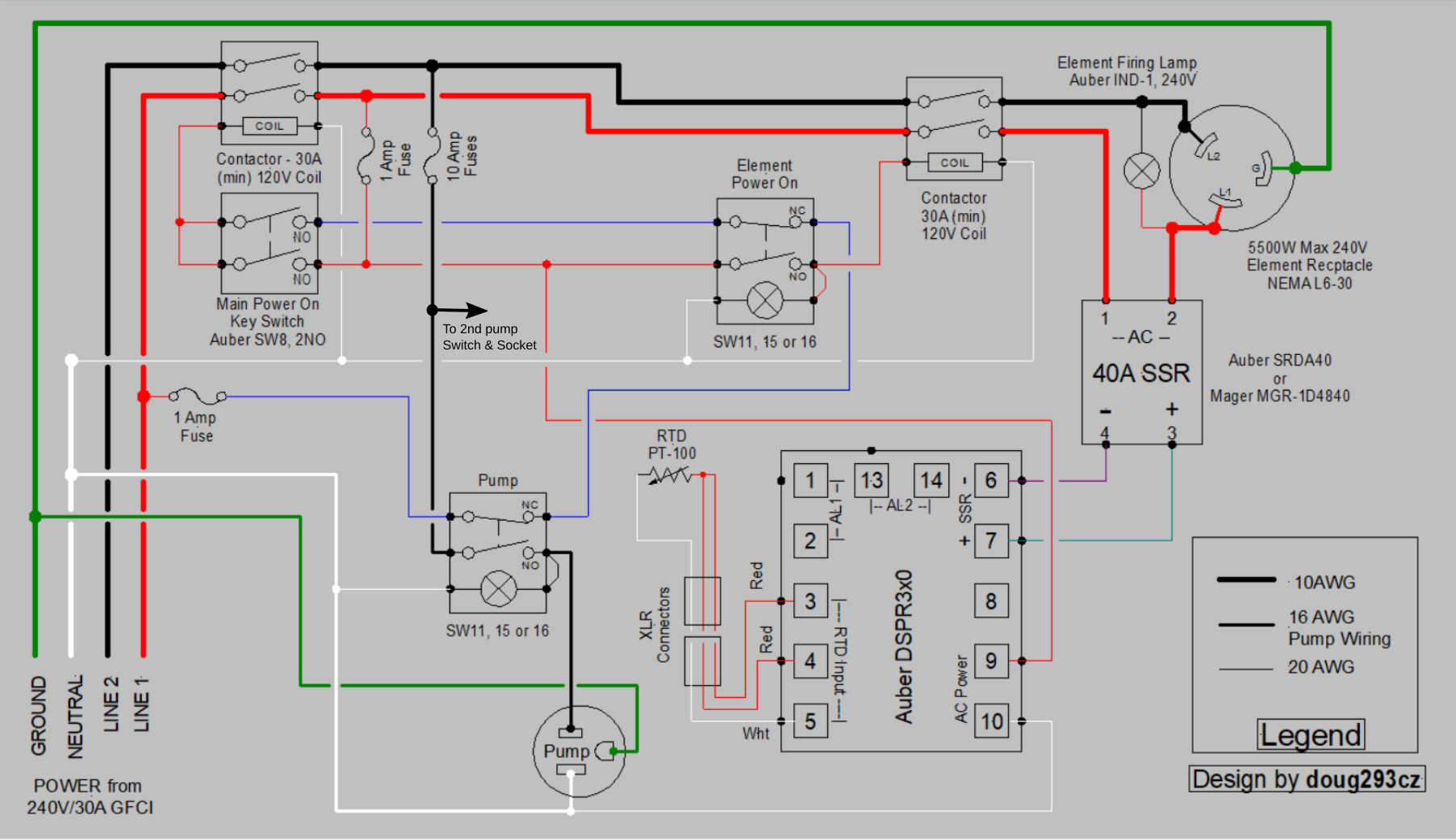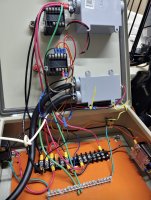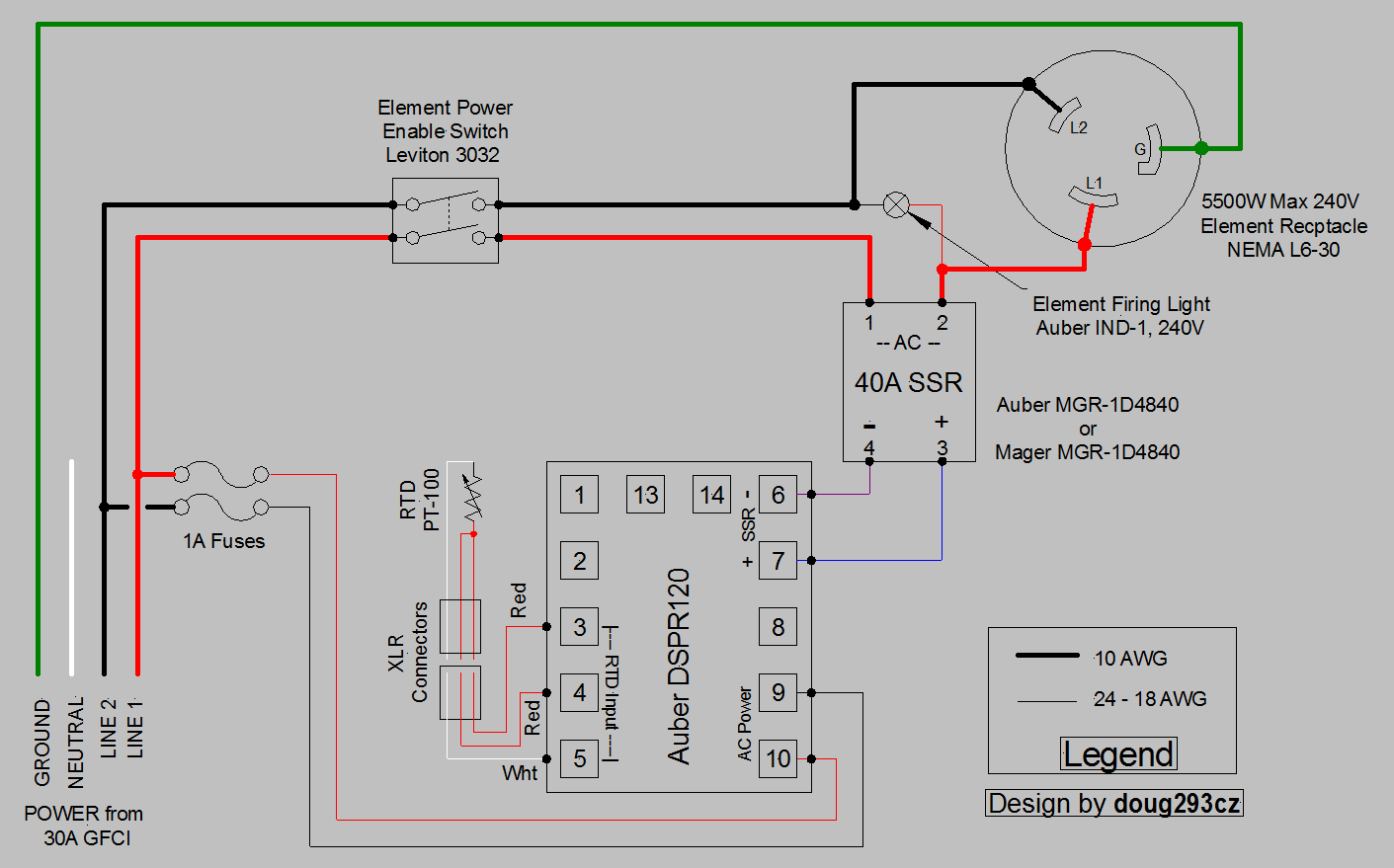- Joined
- May 3, 2013
- Messages
- 102
- Reaction score
- 24
I am redoing my single element brew controller. I have one 5500w 240v element. I want to use a single PID controller (Most likely Auber EzBoil) and I want to have 2 120v outlets controlled by switch.
My thoughts are to have one selector switch to power on the whole box.
Another selector switch to power on the element.
Two selector switches for the 120v outlets.
Do I need a 240v selector switch for the main power?
Do I need a 240v selector for the element?
Can I just use the 120v selector switches for the 120v outlets that would control the pumps?
Trying to use what I already have, I have a control box now, but I'm trying to make it smaller and cleaner. It came with the EKettle I bought from a guy.
My thoughts are to have one selector switch to power on the whole box.
Another selector switch to power on the element.
Two selector switches for the 120v outlets.
Do I need a 240v selector switch for the main power?
Do I need a 240v selector for the element?
Can I just use the 120v selector switches for the 120v outlets that would control the pumps?
Trying to use what I already have, I have a control box now, but I'm trying to make it smaller and cleaner. It came with the EKettle I bought from a guy.











